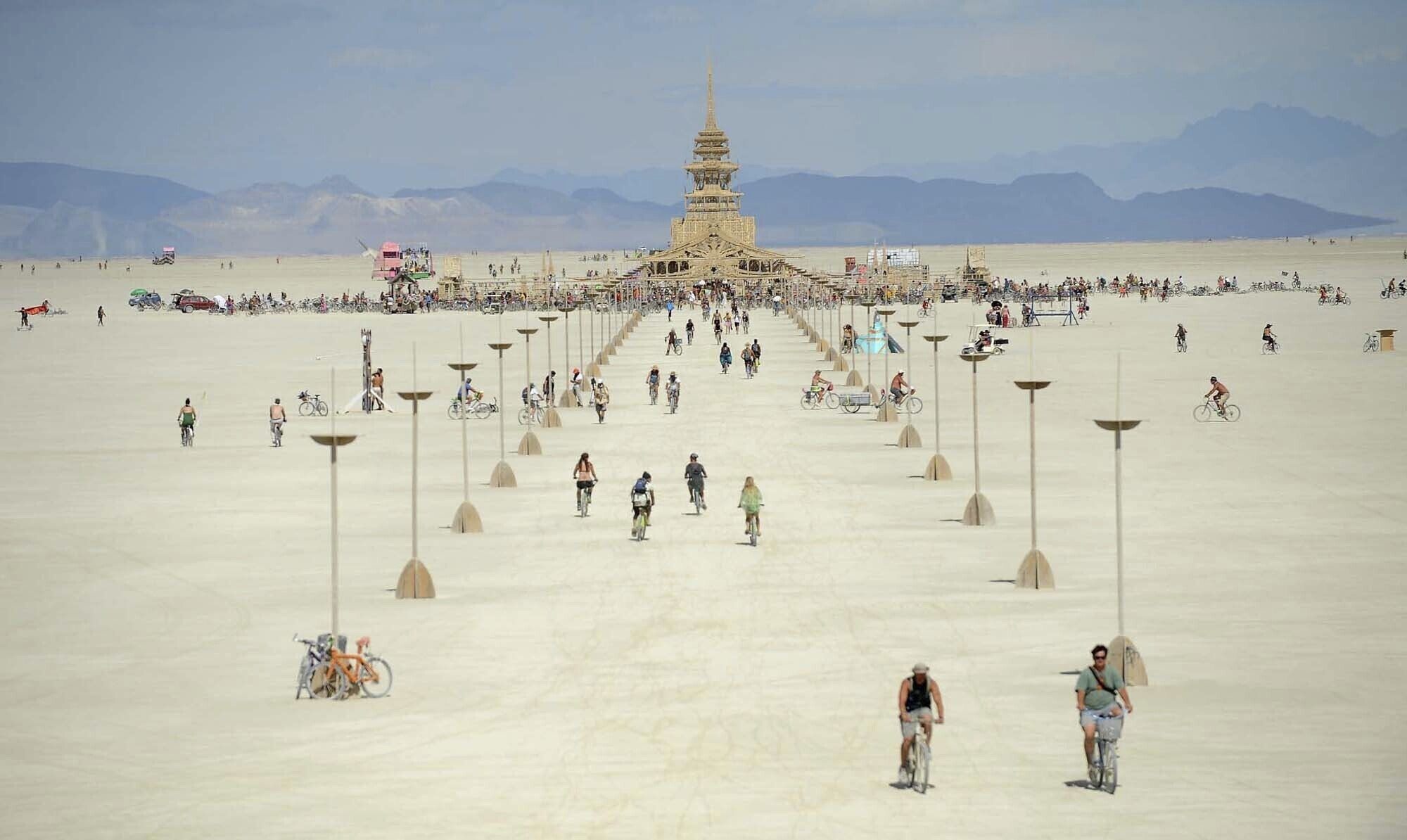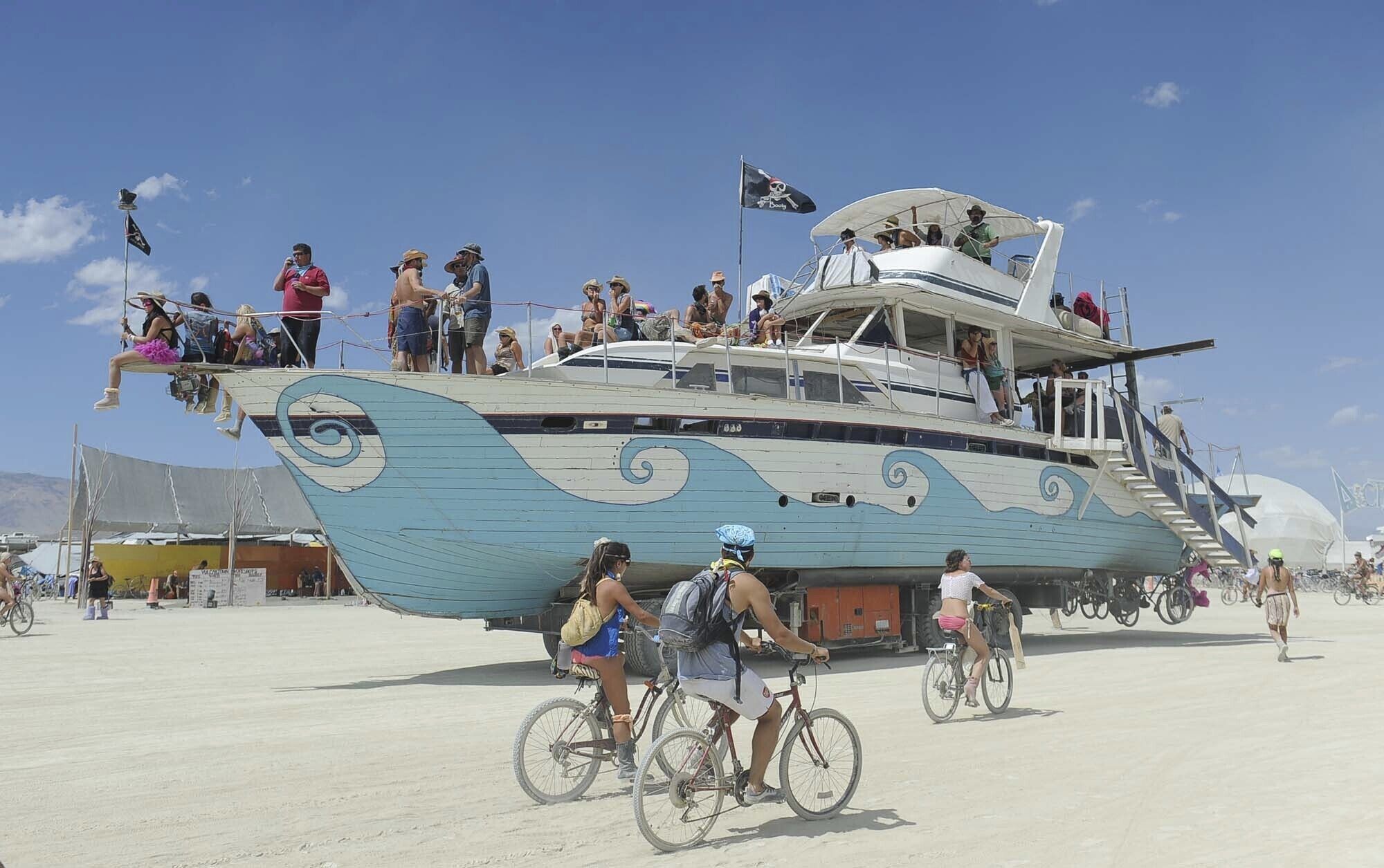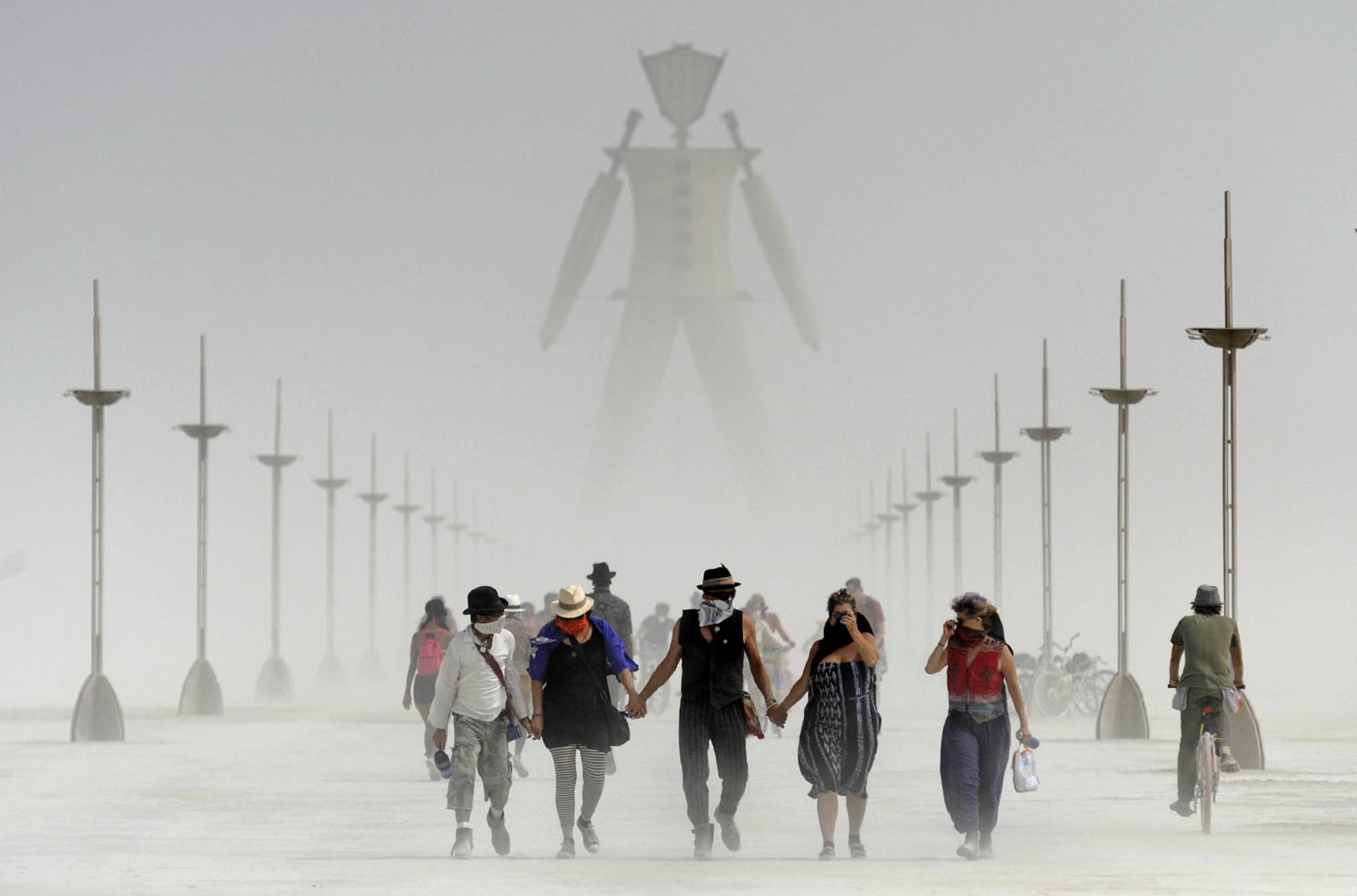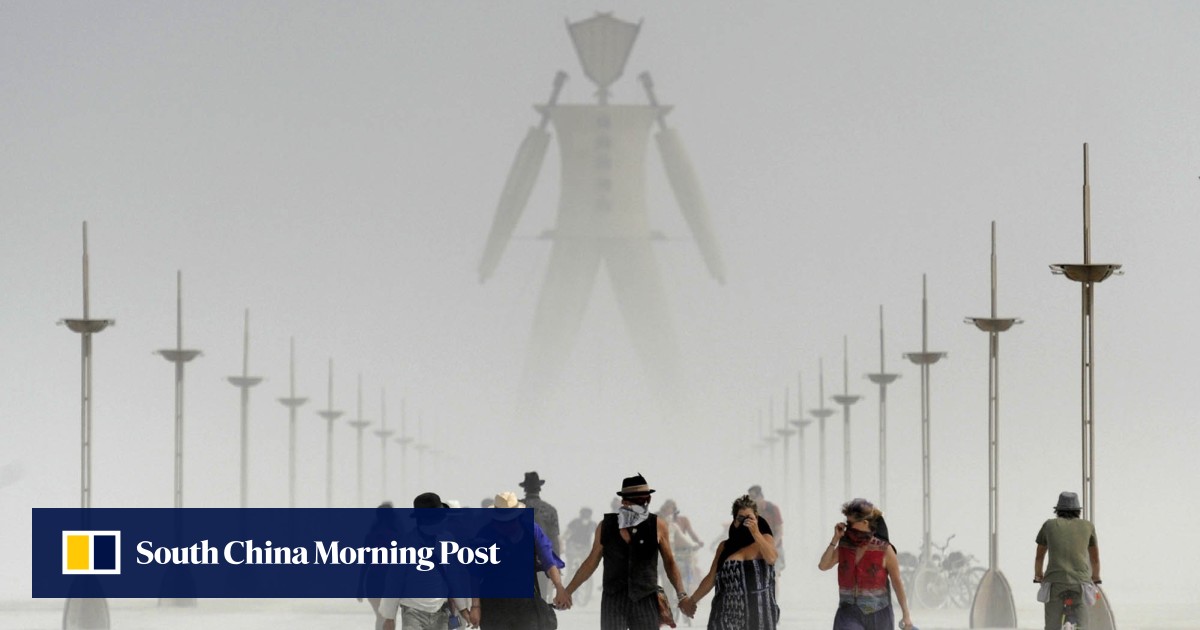Things came to a head in 2011 when tickets sold out for the first time. Organisers responded with a short-lived lottery system that left people out of what was supposed to be a radically inclusive event. As Burning Man matured, luxurious accommodation proliferated, as did the population of billionaires and celebrities.
Katherine Chen, a sociology professor in New York who wrote a 2009 book about the event’s “creative chaos”, was among those who wondered whether Burning Man “would be a victim of its own success”.
Exponential growth led to questions about whether organisers had veered too far from the core principles of radical inclusion, expression, participation and the pledge to “leave no trace”.
1 dead at US Burning Man festival as thousands trapped during heavy rains
1 dead at US Burning Man festival as thousands trapped during heavy rains
That last hurdle was never harder to clear than in 2023 as “Burners” tried to leave over Labour Day weekend after torching the 24-metre (80 ft) wooden sculpture that is “the Man”.
A rare rainstorm turned the Black Rock Desert, 180km (110 miles) north of Reno, into a muddy quagmire, delaying the departure of 80,000 revellers last September. Once out, organisers had six weeks to clean up under the terms of a federal permit.
By the smallest of margins, they passed the test in November, with a few adjustments recommended for the future. The verdict from the US Bureau of Land Management means Burning Man is in line to use federal land again this year.
Debate over the event’s future, however, is sure to continue as divisions grow between the ageing-hippy types and wealthier, more technologically inclined newcomers. Veteran participants fear the newer set is losing touch with Burning Man’s roots.

The event has made a quantum leap from a gathering of hundreds to one that temporarily becomes Nevada’s third largest city after metropolitan Las Vegas and Reno. The festival drew 4,000 in 1995 and topped 50,000 in 2010.
It’s no wonder seasoned Burners mutter: “It ain’t like it used to be.”
“Back then, it was much more raw,” says Mike “Festie” Malecki, 63, a retired Chicago undertaker turned California sculptor who made his 13th trip this year to the land of colourful theme camps, towering sculptures, drum circles and art cars.
“There are more [people] who come out to party and don’t participate. We call them spectators,” he said.

Senior organisers long have wrestled with whether to become more civilised or remain what co-founder Larry Harvey described as a “repudiation of order and authority”.
Ron Halbert, a 71-year-old from San Francisco, has worked as support for Burning Man’s 90-piece orchestra for 20 years and remains optimistic. He says: “It’s still the gathering of the tribe.”
The week-long event is permitted tentatively for the same 80,000 attendance cap this year. Organisers are considering minor changes, although they generally resist making new rules, according to executive director Marian Goodell.
The rain weeded out the people who didn’t want to be there for the right reason
Critics on social media howled at the mayhem left behind last year, posting photos of piles of rubbish, abandoned vehicles and overflowing portable toilets while ridiculing the “hippies” and their leave-no-trace mantra.
But that mayhem may have actually helped bring Burning Man back to its roots.
Katrina Cook of Toronto says it forced people to be true to the founding principles of participation and radical self-reliance.
“The rain weeded out the people who didn’t want to be there for the right reason,” Cook says.

Mark Fromson, 54, was staying in a recreational vehicle, but the rain forced him to find shelter at another camp where fellow burners provided food and cover.
Another principle of Burning Man, he says, centres on unconditional gift giving with no expectation of something in return.
After sunset, Fromson set off barefoot through the muck for a long trek back to his vehicle, slogging through thick clay that clung to his feet and legs. The challenge, he says, was the mark of a “good burn”.

Nevertheless, Jeffery Longoria of San Francisco, who marked his fifth consecutive voyage to Burning Man the previous summer, says its core principles are going to evolve no matter what as a new generation takes over.
“The people that created this community, a lot of them are getting older and retiring and there’s a lot of new young people coming in, the kind that have, you know, a couple of US$100,000 RVs and are just careless about the environment.”
Soren Michael, a Los Angeles technology worker who made his 11th trip this year, says the biggest change has been the ability to communicate with the outside world from the desert.
“It was almost part of the appeal to be disconnected,” he says.

Twenty years ago, the psychedelic celebration was attracting academic scholars – anthropologists, sociologists, political scientists, economists and communications professors – curious about how the makeshift civilisation functioned without real-world rules.
Burning Man references started popping up in TV episodes and talk show punchlines. The rich and famous began venturing to Black Rock City, as the festival’s temporary metropolis is called.
A full-blown exhibition about the phenomenon debuted in 2018 at the Smithsonian American Art Museum in Washington. Even then, veteran Burners complained about the event becoming as much a curiosity to see as to do.

That’s in part the problem veterans have with the advent of glamour camping, or glamping, in which private companies provide packaged trips to concierge camps with luxury RVs and lavish meals under chandeliers. Some believe the camps violate Burning Man principles.
The growing number of billionaires and celebrities who fly in on private jets to Black Rock City’s temporary airstrip “seems to be everyone’s favourite thing to hate”, Goodell says. But wealth shouldn’t be a cause for shame, she says.
“The question is not about glamping,” she says. “Comfort doesn’t assume lack of engagement. It’s whether you have a glamping camp and you’re not really engaging.”
Burning Man’s purpose remains the same: building a creative, stimulating environment, the essence of which people can take back to their own communities.
“We thought that from the beginning,” Goodell says. “We just didn’t know it would be 80,000 people.”







